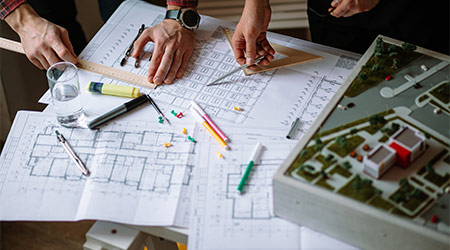Construction projects rarely take place in a vacuum. As a result, it is crucial that managers remain fully cognizant of a construction project’s impact on the rest of the organization from the beginning of the design phase. Nowhere is this relationship more important than with healthcare construction projects that affect staff and patients. Managers looking to minimize disruption and maximize efficiency might want to pay attention to the potential benefits of project phasing.
Many hospitals expend an extensive amount of effort in market vision and strategic planning. From that effort, construction project planning commences with an intense focus on the desired final design and operational functionality of the new planned space. One aspect of project planning that might not get enough attention is phase development, according to Medical Construction & Design. Project phasing can severely impact a hospital during construction and negatively impact the construction timeline.
On-campus construction projects must carefully plan impacts to the surrounding campus and mitigate the appearance of change, all while providing consistency for patients, staff and visitors. Phasing cannot be just a schedule-related task for the contractor to figure out alone.
Managers can use a series of best practices to help hospitals maintain their level of care and employee satisfaction throughout construction.
For example, they need to monitor impacts to life safety systems. The design team should be aware of existing fire barriers, smoke compartments and other life safety components impacted by the renovation.

 Grounding Healthcare Spaces in Hospitality Principles
Grounding Healthcare Spaces in Hospitality Principles UC Davis Health Selects Rudolph and Sletten for Central Utility Plant Expansion
UC Davis Health Selects Rudolph and Sletten for Central Utility Plant Expansion Cape Cod Healthcare Opens Upper 2 Floors of Edwin Barbey Patient Care Pavilion
Cape Cod Healthcare Opens Upper 2 Floors of Edwin Barbey Patient Care Pavilion Building Sustainable Healthcare for an Aging Population
Building Sustainable Healthcare for an Aging Population Froedtert ThedaCare Announces Opening of ThedaCare Medical Center-Oshkosh
Froedtert ThedaCare Announces Opening of ThedaCare Medical Center-Oshkosh